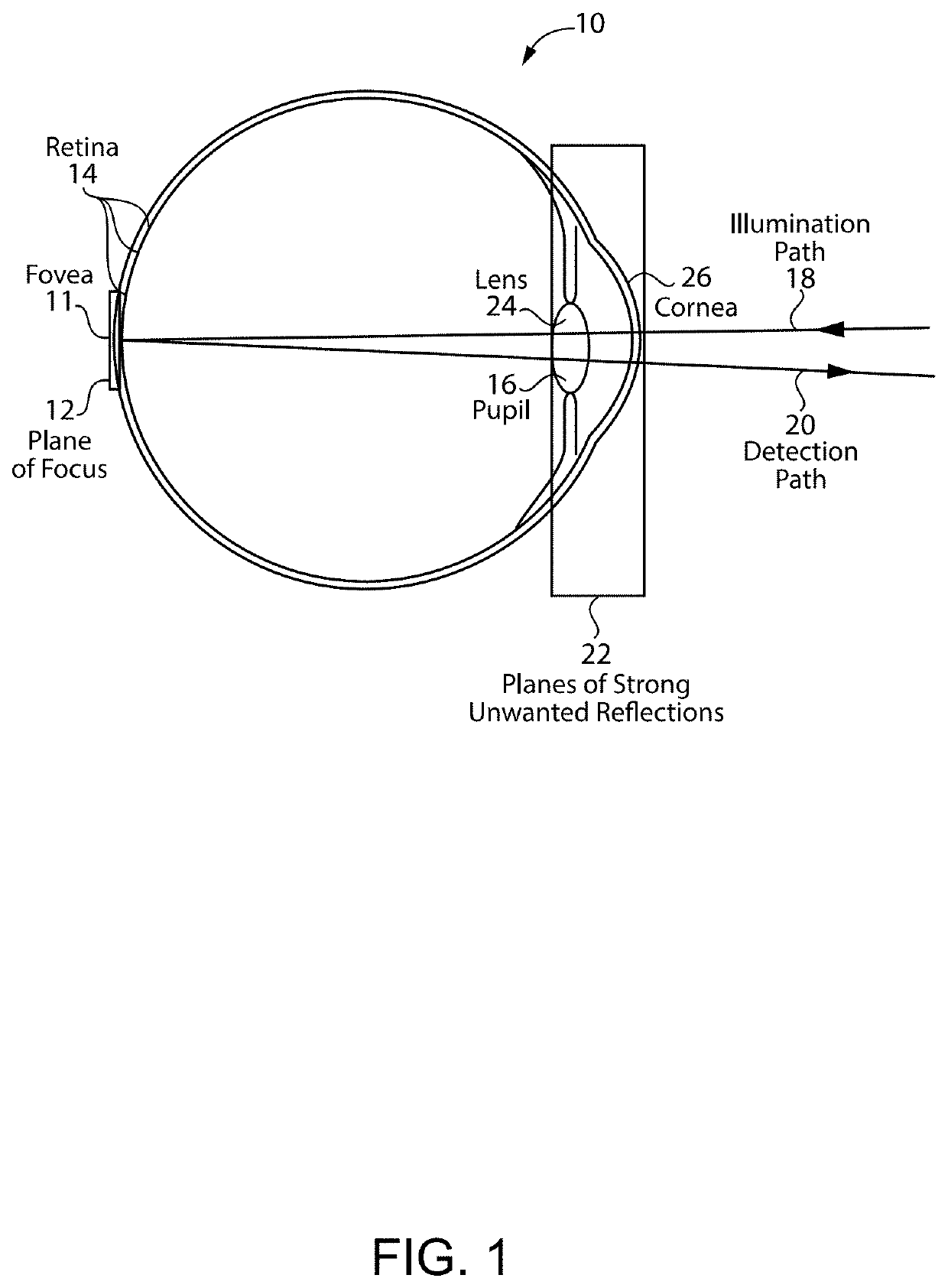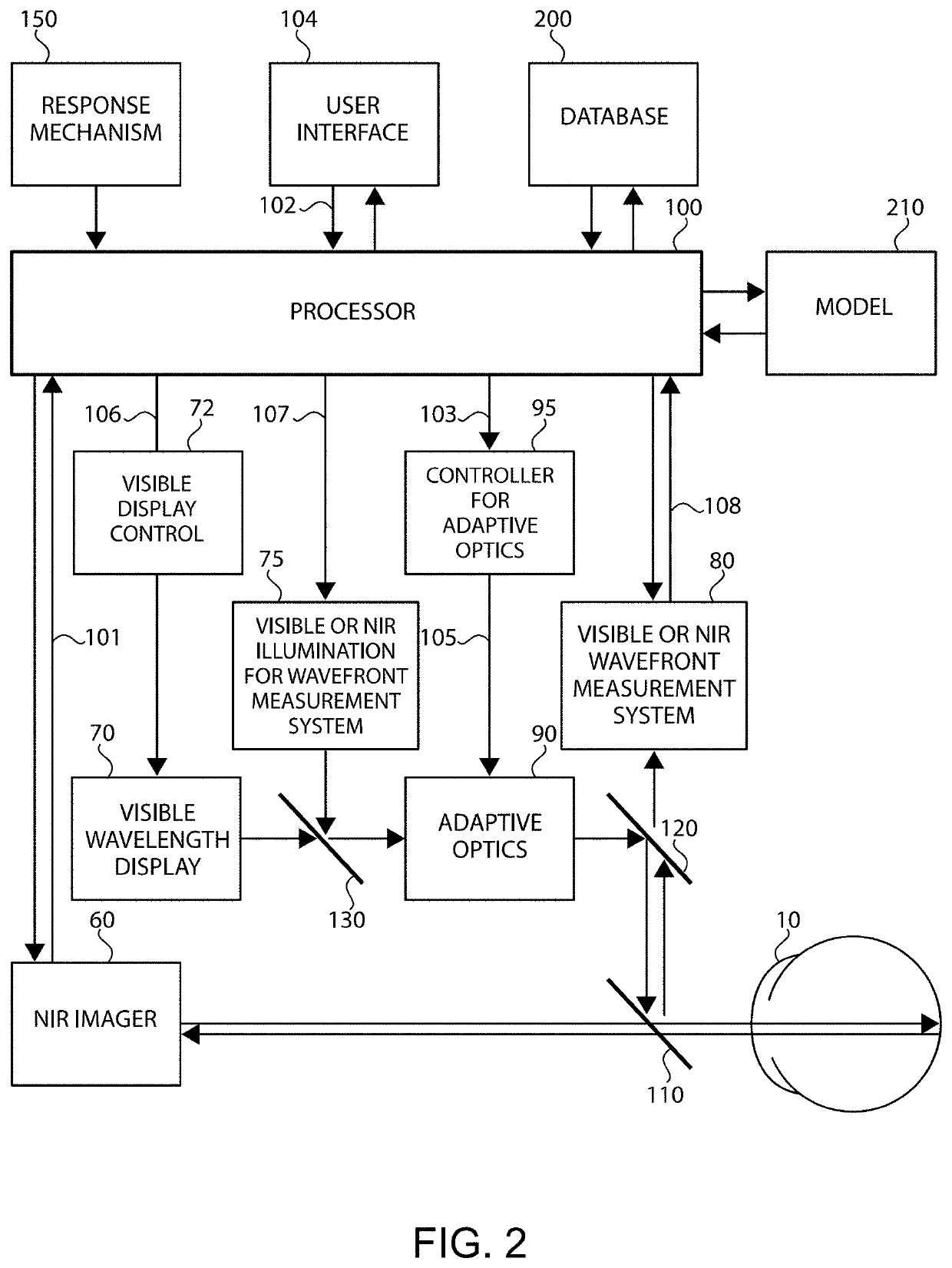Methods, systems, and devices for vision testing
a technology of vision testing and system, applied in medical science, diagnostics, skiascopy, etc., can solve problems such as errors and variability, inability to know the location of visual stimulus, and inability to determine whether there is an eye instability
- Summary
- Abstract
- Description
- Claims
- Application Information
AI Technical Summary
Benefits of technology
Problems solved by technology
Method used
Image
Examples
Embodiment Construction
[0036]The embodiments of the present invention described below are not intended to be exhaustive or to limit the invention to the precise forms disclosed in the following detailed description. Rather, the embodiments are chosen and described so that others skilled in the art may appreciate and understand the principles and practices of the present invention.
[0037]FIG. 1 illustrates a schematic diagram of an eye 10 showing selected tissues including a pupil 16 through which light from a light source provides a visual stimuli, such as a visual display, is projected, a retinal plane 12 as the target plane of focus for the projection of visual stimuli and imaging of retinal and subretinal structures, a cornea 26, a lens 24, and other anterior segment structures. As used herein, “visual display” is used to describe a device that transmits a visible or non-visible light image directed toward and received by the eye of a patient. Once received by the eye, the patient undertakes tasks that ...
PUM
 Login to View More
Login to View More Abstract
Description
Claims
Application Information
 Login to View More
Login to View More - R&D
- Intellectual Property
- Life Sciences
- Materials
- Tech Scout
- Unparalleled Data Quality
- Higher Quality Content
- 60% Fewer Hallucinations
Browse by: Latest US Patents, China's latest patents, Technical Efficacy Thesaurus, Application Domain, Technology Topic, Popular Technical Reports.
© 2025 PatSnap. All rights reserved.Legal|Privacy policy|Modern Slavery Act Transparency Statement|Sitemap|About US| Contact US: help@patsnap.com



